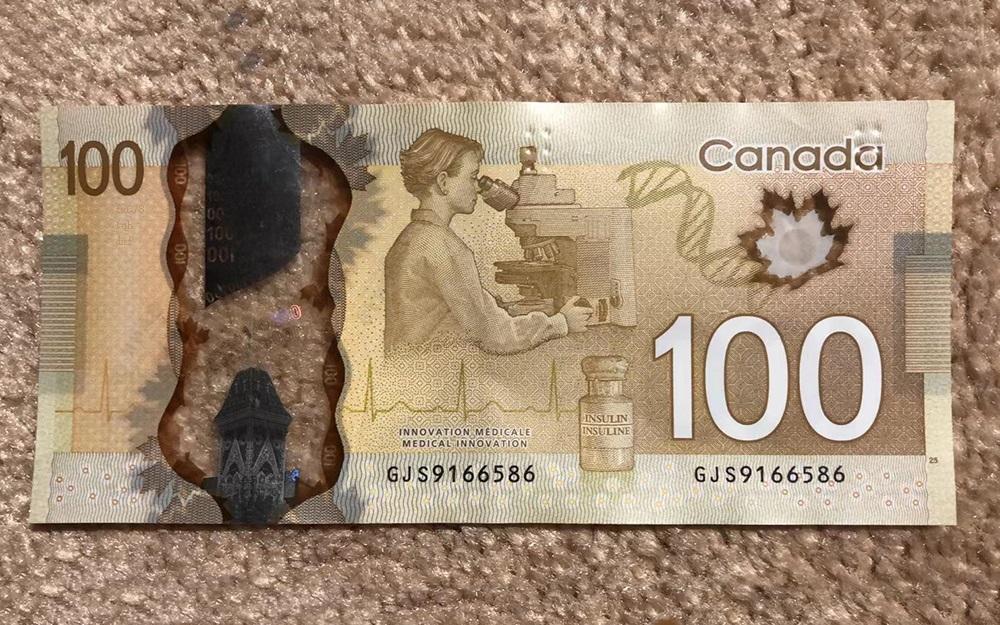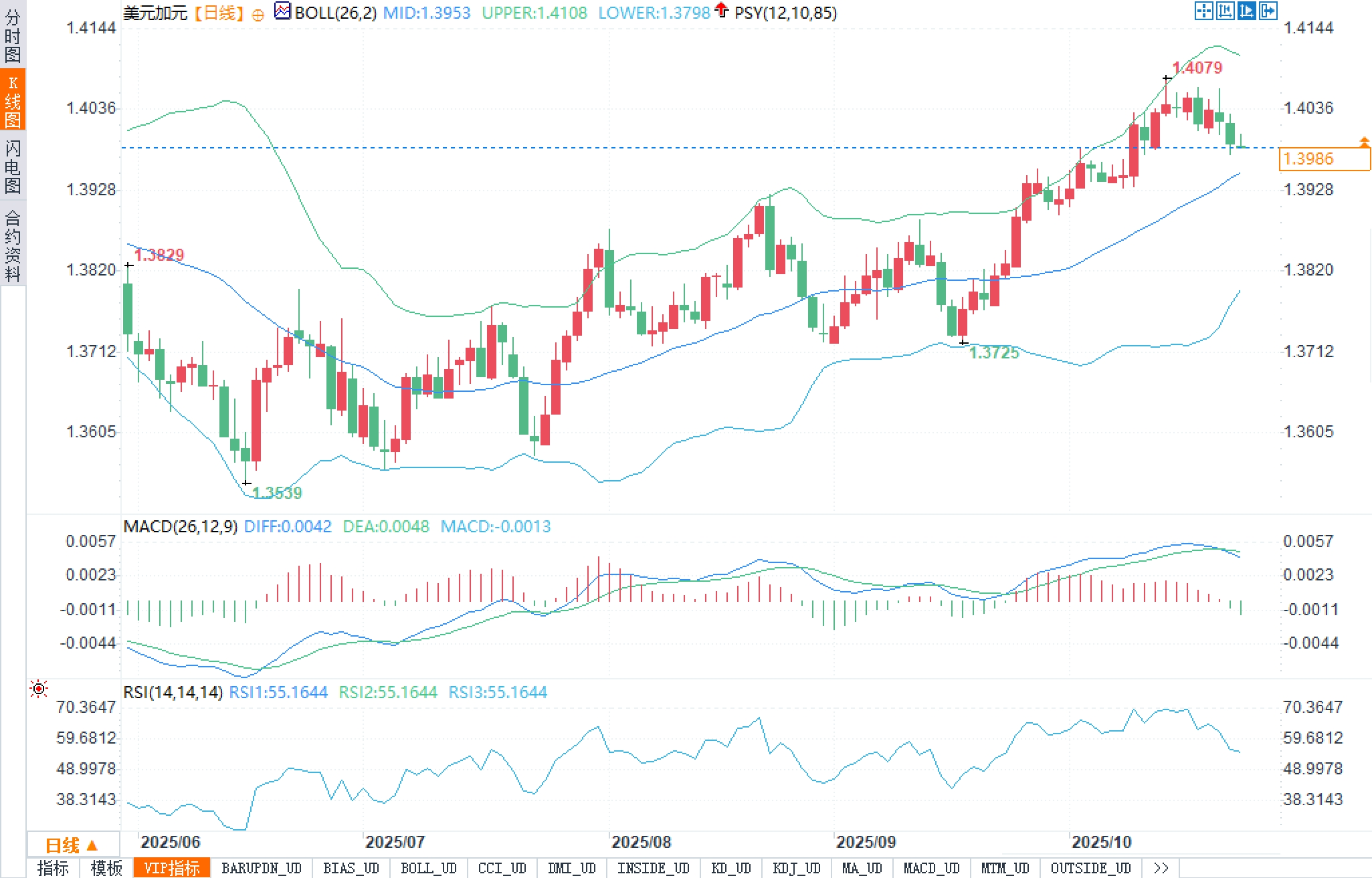October’s shock is still there: Will USD/CAD see 1.41 again, or return to 1.38?
2025-10-23 21:37:04

Fundamentals
Hard data since October hasn't been kind to the Bank of Canada: September saw an increase of 60,000 jobs, while the unemployment rate remained at 7.1%. The CPI rose to 2.4% that month, with the core inflation rate rising another 0.1-0.2% from the previous reading, both remaining above 3.0%. Common sense would suggest this data is enough to keep policymakers on hold. However, the market is still pricing in a rate cut of approximately 21 basis points on the 29th of this month, with the prevailing expectation being a 25 basis point cut – a reduction of the policy rate to 2.25%.
The reasons are straightforward: a subdued economic and employment outlook, coupled with continued uncertainty surrounding trade negotiations, weighing on business investment and hiring. The Bank of Canada's third-quarter business survey offered a clear signal: while sentiment improved slightly compared to the second quarter, the "future sales" indicator turned negative again in 2025 for the first time, with the proportion of companies predicting a deterioration in order leads reaching a post-pandemic high. Regarding employment, 63% of surveyed companies expect their workforce to remain unchanged or decrease over the next 12 months (with approximately 50% predicting "unchanged" and 13% predicting "decreased")—a combination that historically has been associated with higher unemployment rates.
Prices are not uncontrollable. Businesses generally report that weak demand is limiting cost-passing, and wage growth expectations for the next 12 months average 3.1%, significantly lower than the 3.6% reported in the September employment report. Combined with the slowdown in the housing component, the Bank of Canada's baseline forecast for the CPI to average 2% in 2026-2027 remains tenable. This meeting will update economic forecasts. Based on the current information framework, policymakers are likely to ignore the marginal increase in inflation in September and implement a 25 basis point easing policy.
Communication is also paving the way for rate cuts. The September statement emphasized growth and employment risks; the Governor's speech on October 17th focused on "very weak hiring," particularly in tariff-sensitive sectors. Even with slightly more neutral language than in September, completely closing the door on further rate cuts remains difficult: Preserving room for further easing until external uncertainties dissipate will help ease financial conditions through the expectations channel, weaken the Canadian dollar, and improve export competitiveness. In the baseline scenario, the Bank of Canada remains on hold in December and cuts interest rates by another 25 basis points to 2.0% in January. Historically, an unemployment rate of 7.1% has corresponded to a real policy rate as low as -1.50% (relative to core and headline CPI metrics). Currently, it's only around +0.35% (for headline CPI) and -0.45% (for core CPI), so a further decline is not unconventional.
Technical aspects:
On the daily chart, the exchange rate has risen from 1.3725 to 1.4079 and is currently consolidating around 1.4. The price remains within the strong range between the upper and middle Bollinger Bands at 1.4108, the middle at 1.3953, and the lower at 1.3798. As long as 1.3953 is not effectively broken by the daily real body, the trend remains bullish. The primary resistance lies at 1.4079 (the recent high), above which lies the upper Bollinger Band at 1.4108. A breakout with significant volume would technically open up space above 1.41.

However, we must be wary of a weakening momentum: MACD parameters (26, 12, 9) show DIFF 0.0042, DEA 0.0048, and the histogram is -0.0013, indicating a slight "death cross" followed by a negative bar, suggesting a marginal decline in upward momentum and pressure to continue retesting the middle track. The relative strength index (RSI) (14) is approximately 55.1644, in a neutral to strong range but has fallen from a high. Combined with the price's decline after reaching the upper track, there is a short-term trend of "high-level fluctuations-mid-track retest" mean reversion.
Overall analysis: 1.3953 is the short-term watershed between bulls and bears. If it breaks, watch for the high volume zone and the previous support level around 1.3880-1.3850. Stronger support remains near the lower Bollinger band at 1.3798. Above, 1.4079/1.4108 form the first and second resistance zones. A breakout and a firm hold are needed to accelerate the trend.
Market Sentiment Observation
Since October, the US dollar has maintained a "passive strength"—due more to the dovish or even dovish stance of other economies than to unilateral fundamental spillovers. The Canadian dollar's resilience has been slightly better than that of European and Oceanian currencies amidst fluctuations in risk sentiment, but the core conflict remains the discrepancy between domestic easing and the strength of the US dollar.
Emotional fulcrum: If the Bank of Canada cuts interest rates by 25 basis points as planned and leaves the door open, the market will instinctively extend the easing sequence, and the exchange rate will become more sensitive to interest rate differentials.
Reflexivity: If the US dollar itself falls in the coming weeks due to loosening of Fed communication, the market will quickly switch to the narrative of "passive recovery of the Canadian dollar", and the USD/CAD retracement will be smoother; conversely, once the US dollar strengthens again due to risk aversion or unexpected data, the exchange rate will hit the upper resistance band more resolutely.
- Risk Warning and Disclaimer
- The market involves risk, and trading may not be suitable for all investors. This article is for reference only and does not constitute personal investment advice, nor does it take into account certain users’ specific investment objectives, financial situation, or other needs. Any investment decisions made based on this information are at your own risk.





















